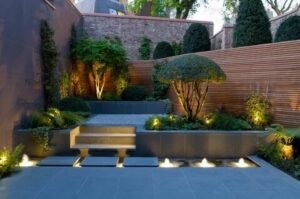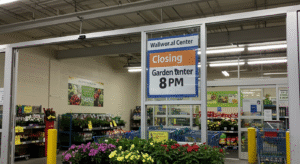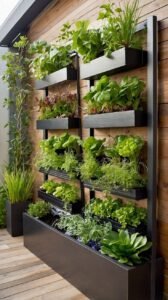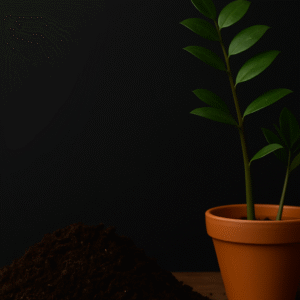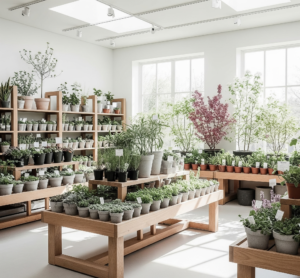Garden Design Ideas For Small Garden

design garden
Gardens, regardless of their size, have the potential to be peaceful retreats full of life. With the transformative power of innovative design, a small garden can become an escape where nature and creativity coexist. This guide focuses on bold design concepts that can turn even the most compact outdoor area into a serene haven.
Understanding Small Garden Challenges
Each tiny outdoor area of a house faces myriad problems. With small gardens, so many things have to be solved simultaneously, leading to stressfully sophisticated designs and many interrelated components in the case of a garden. The size of the available space often poses an overwhelming challenge, or a combination of all features, at the same time, makes overcrowding a possibility. At the same time, the available space frequently poses a challenge, along with exposure to sunlight, and it has the potential to limit plant growth. In cases where outdoor areas are communal, limitations related to visibility can represent another concern. The first step in boldly designing a small garden is to use zoning works as the most effective method for optimizing smaller areas. This zoning technique empowers you to identify and divide the space into a lounging nook, planting nook, and pathway, thereby easing the garden’s flow and preventing a disorganized layout. This also solves the primary issues of the more compact areas. design gardening is another substantial aid in this case. Careful planning improves even the smallest of spaces to make them inviting, balanced, comfortable, and attractive to the eye.
Selecting the Correct Layout
A suitable layout is fundamental for the design of the small garden. Strategies that aid compact spaces include enhancing the area’s flow while creating an illusion of space. One of the ways to solve this problem is to move away from straight lines and introduce layers and curved features. Winding paths, rounded flower beds, and rounded benches are some elements of a layered and rounded garden. The movement and height impression give the garden more space than it occupies. The strategic placing of focal points is also fundamental in aiding the flow and structure. A striking planter, sculptural tree, or water fountain can bring focal interest to tie the design, making it more visually appealing. So as not to overcrowd the space, integrating seating areas requires work and selective furnishing. Foldable chairs, corner seating, or built-in benches provide open and functional areas. Changing rooms or pathways should enable easy movement and access without excessive space. Designing using SketchUp or pen and paper can facilitate planning a compact garden layout. Outdoor areas need not be complicated to maintain. With light, carefully arranging the elements above, these spaces become inviting and effortlessly stylish.
Selection of Plants for Small Gardens
Selection of Plants: One of the many factors considered in creating a self-sustainable ecosystem and an ever-changing captivating view of care is integrating various gardening principles that augment sustainability. Companion planting is another visual strategy that increases biodiversity on an ecological level. Through using succulents, which are bold and sculptural, alongside soft and feathery ferns, stunning effects of complementing textures can be achieved. Dwarf maples and miniature fruit trees decorate garden borders by providing seasonally containing arrangements or windows of vibrant color. Companion planting, where certain species are used to help each other grow, enables minimal upkeep while fostering a self-sustaining nature. Proper selection ensures minimal space usage and guarantees seasonally captivating views.
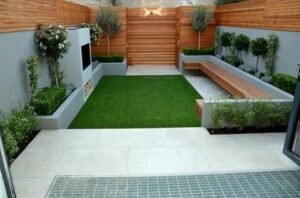
Incorporating Hardscaping Elements
The Significance of Hardscaping in Small Garden Design Integrating hardscape into small gardens is essential because it provides structure and form. Items such as natural stone, wood, or even composite decking serve as texture, and patios and pathways help to segregate spaces. Even a small tabletop fountain can function as a light water spout, adding gentle and soothing features that enhance the atmosphere. The hardest part of hardscaping these small meters is the interaction of the plant features with the elements. Softened edges of stone or wooden raised beds provide seamless transitions and some definition. The use of mirrors and polished concrete increases the amount of light in the garden and creates an illusion of space. When all hardscape elements are integrated seamlessly, they serve the dual purpose of functionality and beauty, while the garden remains balanced and mesmerizing to the eye.
Lighting and Garden Decorations
With proper lighting, a garden’s allure can be amplified. The up-lighting techniques set on trees, fences, and some plants highlight them beautifully, creating a warm glow that gives the garden a fairytale-like aesthetic. With solar-powered battery lanterns and LED pathway lights, a garden can be lit up without losing its natural charm. Metal sculptures, along with the wind chime, serve as perfect unique pieces that beautify the garden while also making the garden more applicably enjoyable. When placed at the right angle, mirrors expand the beauty of the greenery and sunlight, making the garden look wondrously larger. Each piece, from pots to accessories, captures the eye, thereby bringing and unifying the inviting essence of the garden while making it unique. The garden’s story is marked by warm lighting and enhanced by the soft lights illuminating the garden. The garden, without a doubt, is a fundamental component of growing the home’s relaxing impact and visual appeal, which brings joy and calming delight. The placement of pots, alongside the soft-placed plants, transforms the garden into a captivating, exquisite sculpture adored by all.
Easy Sustainable Gardening
A garden that looks good must be termed as maintained. Through low-maintenance gardening techniques, even the busiest individuals can achieve an environmentally friendly garden. Lavender, sedum, and ornamental grasses are drought-resistant and beautiful. Sustainability is easier with the proper watering systems like drip irrigation, division, and self-watering. Intensive garden care is not required as mulching improves soil quality and active soil, is rich in nutrition, controls weed growth, and enables moisture retention. Native plants are less likely to become diseased or stressed, as they are ideally suited to the local climate. These approaches allow a small garden to remain healthy and alive with minimal effort.
Conclusion
This text explains how to make a simple or small garden captivating and charming with clever ideas. It describes how thoughtful planning of design components and selective use of plant life help accentuate dimension and provide an illusion of space. The addition of lighting takes the garden from mere ornamentation to a retreat, which adds character. The size of the garden does not matter. What truly matters is the creativity brought into it. Shifting the layout, textures, and foliage accents eases the transformation of a simple garden into a private paradise.

